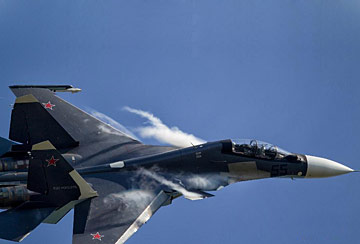Recently, a face-to-face meeting was held between the Defense Minister of China and the Secretary of Defense of the U.S. During the meeting, China expressed concerns over three obstacles hampering the development of relationships between the U.S. army and the PLA, and clarified its position. One of the three obstacles is frequent close reconnaissance of U.S. vessels and aircraft in China's exclusive economic zone. Military expert Zhang Zhaozhong suggested in a media interview that the purpose of these approaches may be to investigate ports, submarine bases and aircraft carrier bases under construction.
According to Guan Youfei, director of the Foreign Affairs Office of the Ministry of National Defense, there are three main obstacles to the development of the relationship between the U.S. army and the PLA. These are weapon sales to Taiwan, the discriminatory U.S. Congress act that places restrictions on the development of the relationship between the U.S. army and the PLA, and frequent close reconnaissance of U.S. vessels and aircraft in China's exclusive economic zone. Coinciding with the meeting between the Defense Minister of China and the Secretary of Defense of U.S., China expressed concerns about these three obstacles, and clarified its position.
Guan Youfei proposed on behalf of China that a working group could be established to discuss and investigate detailed solutions to the three obstacles. The U.S.’s response was positive, saying that the establishment of a working group would be an effective way to establish positive communication between China and U.S. in pursuit of constructive solutions.
With regard to the frequent close reconnaissance of U.S. vessels and aircraft in China's exclusive economic zone, Guan Youfei said that these incursions were becoming increasingly frequent, and the distances involved were growing steadily shorter, leading to a feeling of unease and a sense that the country was under threat. Additionally, such conduct went against the trend for the two countries to build a new style of relationship between great powers with increasing strategic trust.
Guan Youfei said that previous lessons showed that close reconnaissance encroachments were a source of conflict between China and the U.S. on the sea. If the U.S. continued to maintain this policy, the number of encounters between Chinese and U.S. vessels and aircraft was sure to increase, as was the likelihood of an incident. China and the U.S. were working towards the establishment of mutual trust, and measures appropriate to the cold war were totally unnecessary. China had been expressing this position for some time, and urging the U.S. to consider the problem on strategic level and to reduce or even cease the incursions.
Zhang Zhaozhong said that the primary source of incursions was flights by the ferret aircraft from Kadena Air Base in Okinawa, which usually conducted reconnaissance in the exclusive economic zone just beyond China's 12 nautical mile limit. This reconnaissance was probably aimed at acquiring the operating frequency of radar stations on the coast or the offshore islands of China, as well as plotting the network of radio communication stations along the coast. It might also be intended to identify the location of some radar stations and electronic units that were not yet ready for use or had not yet entered service.
In addition, some reconnaissance vessels could be investigating the hydrography, meteorology, water depth, navigation channels, and water flow along the coast of China, as well as existing infrastructure and infrastructure under construction, such as ports, submarine bases, and aircraft carrier bases.
 Mountain of garbage in Nairobi
Mountain of garbage in Nairobi Highlights of MAKS 2013 Int'l Aviation and Space Show
Highlights of MAKS 2013 Int'l Aviation and Space Show  10th China-ASEAN Expo opens in Nanning
10th China-ASEAN Expo opens in Nanning Eagle Boy takes to sky to break another record
Eagle Boy takes to sky to break another record 12-year-old boy becomes pillar of the family
12-year-old boy becomes pillar of the family Eye-gouged boy receives blind rehabilitation in Shanxi
Eye-gouged boy receives blind rehabilitation in Shanxi Top 10 naked hotels in the world
Top 10 naked hotels in the world The most gorgeous Chinese women in the eyes of foreigners
The most gorgeous Chinese women in the eyes of foreigners A collection of bizarre rooftop buildings around China
A collection of bizarre rooftop buildings around China Putin intimate contacts with marine animals
Putin intimate contacts with marine animals China's frigate 'Bengbu'in fire training
China's frigate 'Bengbu'in fire training Fresh students 'forced' to register in university independently
Fresh students 'forced' to register in university independently 2013 Taiwan Int'l Tourism Expo kicks off in Taipei
2013 Taiwan Int'l Tourism Expo kicks off in Taipei Photo story: Take a gap year
Photo story: Take a gap year Nokia's Global Headquarters: visiting a declining empire
Nokia's Global Headquarters: visiting a declining empireDay|Week|Month